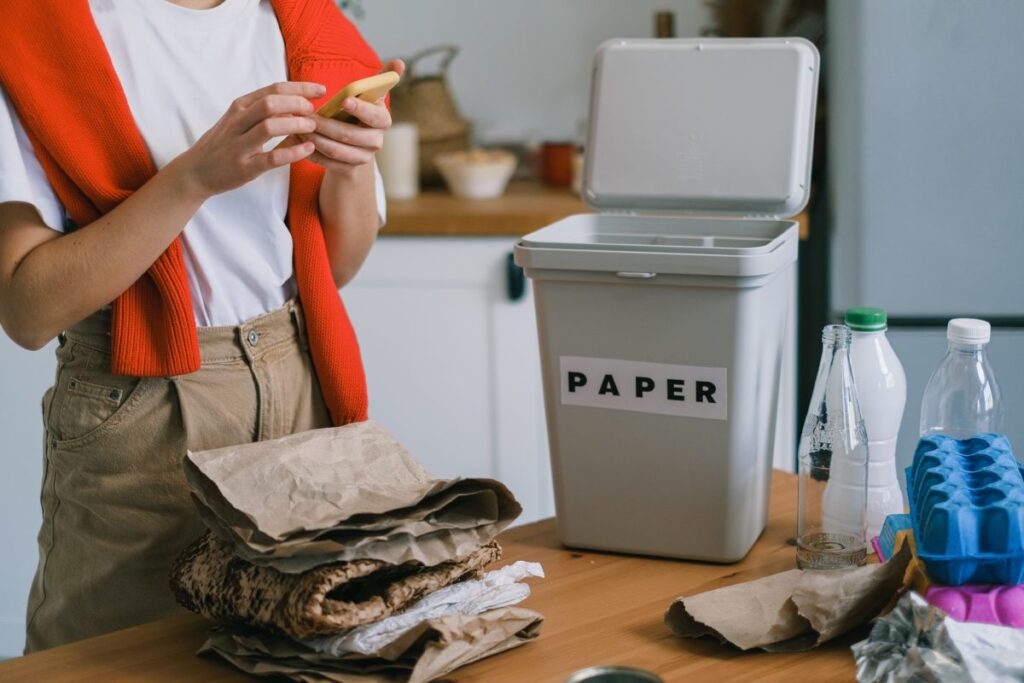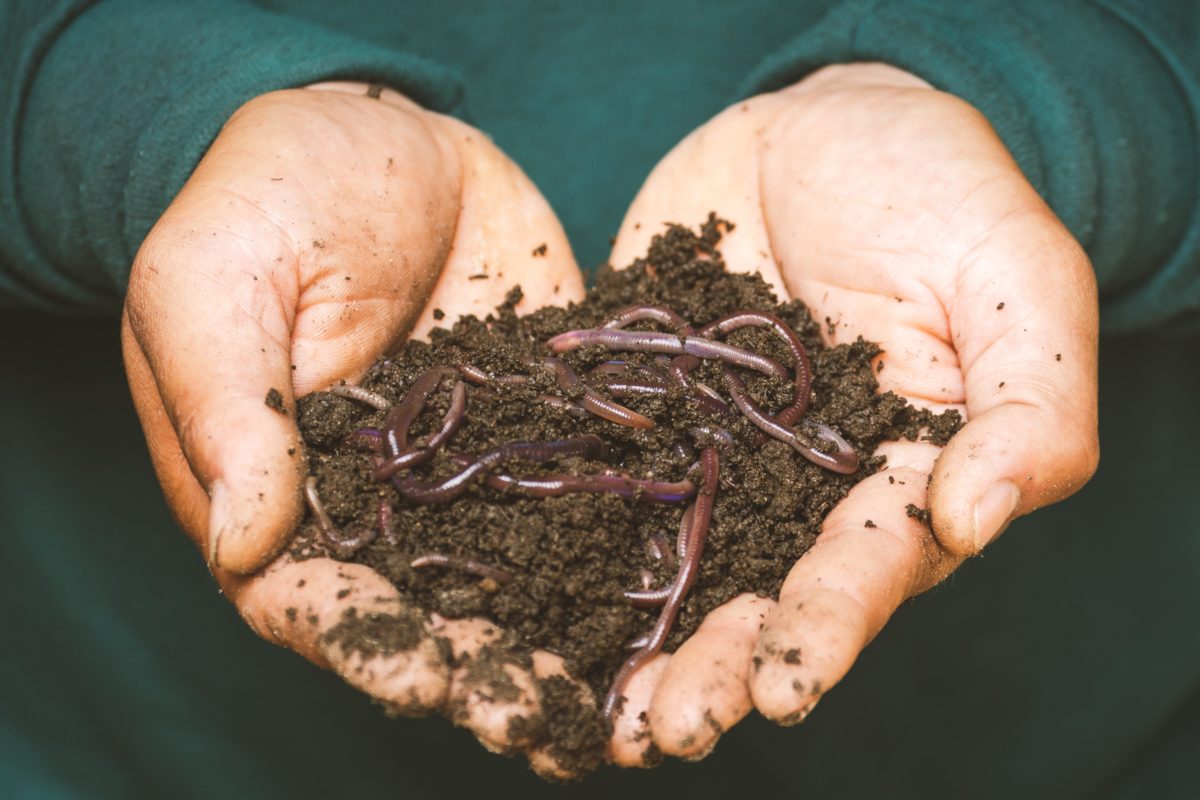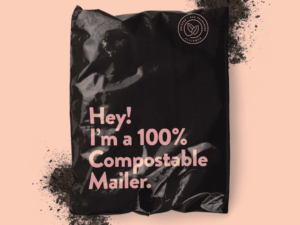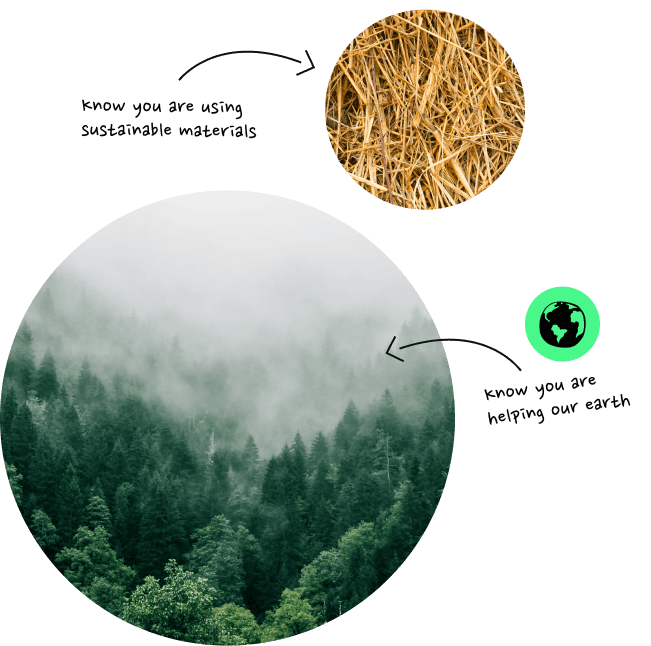As sustainable consumerism continues to gather pace, terms such as biodegradable and compostable seem to be gracing an increasing number of products. The problem is that they are used interchangeably, ill-defined and often confusing, which leads to consumer distrust.
Understanding what these terms mean and, crucially, what they don’t translate to can make the difference between an informed and environmentally motivated purchase and packaging that contributes to landfill and turns off potential customers. The ultimate question is; which is better, biodegradable or compostable?
Biodegradable: what’s the scoop?
In simple terms, biodegradable refers to anything that can be broken down by ‘natural’ processes and organisms. The problem here is that it is a totally unregulated term and, similarly to natural, has positive connotations that it can’t always live up to. For example, when food scraps biodegrade they require as little as a week to become an unrecognisable gloop. A plastic bag that claims to be biodegradable might need a century. Technically the term can be applied here, but it feels like a stretch. The public is starting to realise this.
Naturally, conditions and product composition play enormous parts in how long the degrading process will take, with oxygen, light and water all significantly speeding up the timeframe. Hence why landfills are notoriously slow to break down, as they are devoid of these elements in any significant amounts.
Why is the confusion surrounding biodegradable labelling so significant? Because consumers fall prey to the assumption that anything able to break down ‘naturally’ can go into a composting unit, either domestic or industrial and this simply isn’t true. In fact, the vast majority of products considered to be biodegradable can’t be returned to the earth as nutrients or beneficial biomass at all.
The responsibility is ours to clearly label and define the terms being used.
What about degradable?
Products that can be broken down either biologically or through the use of chemicals are degradable. This is, essentially, everything in the world. There is a shift towards preferring the more eco-friendly sounding biological method, but chemical procedures are still being used, particularly to break down plastics.
These materials will soon prove to be far more costly, as the cost to process them at end of life is set to rise significantly. Degradable packaging will necessarily become a thing of the past, both for fiscal and environmental reasons, leaving biodegradable or compostable alternatives to step up.
How does composting fit into this?
On the face of it, composting, especially home composting, appears to be the most organic and natural option of all, but let’s not overlook the fact that it is entirely dependent on human management.
For a product to be considered compostable, it must biodegrade entirely into organic matter. Sounds pretty simple doesn’t it? In theory it is, but there are different types of composting that add an extra layer of necessary understanding, again, which we must shoulder the responsibility of explaining in layman’s terms.
Home (backyard) and industrial compostable: what’s the difference?
Both need to be managed by humans, as we ensure the right conditions are maintained for optimal product breakdown, but home and industrial composting are very different. Both have to be certified though. Packaging products are required, by law, to make it clear if they are compostable and in what type of facility, meaning that consumers run the risk of finding themselves disappointed if their local area doesn’t offer any commercial composting locations.

Home/residential/backyard compostable
Food scraps and garden waste can be brought together in either a dedicated composting bin or a managed heap, to decompose together into a usable mulch. Ensuring enough heat is essential and regular ‘turning’ of the contents helps to speed up the composting process. Because of the heat needed to fully break down complex products such as meat and dairy, they cannot be home composted.
It’s interesting to note here that although in the US, ‘backyard composting’ is a recognised term, it’s not yet regulated. ‘Home compostable’ is a fully regulated term (as it is in Australia as well), managed by TÜV AUSTRIA. Similarly, ‘industrially compostable’ is regulated, meaning that both are clearly defined and have been objectively verified. They are also fully quantifiable when applied to packaging labels.
Industrially/commercially compostable
A far more engineered option that sees specialist facilities being used to encourage fast breakdown times. This usually translates into soaring temperatures, large machinery being used to chip and move the compostable matter and environmental concerns of a different type. These conditions are stringent, with the products handled being unable to compost any other way, but it does mean that things deemed unsuitable for home composting can still be dealt with, rather than simply sent to landfill. Only, however, if there is a composting centre close by and there is a disheartening lack of them, worldwide.
Which is better: biodegradable or compostable?
Compostable is easily the better option to improve carbon footprints and significantly develo an eco strategy. By choosing to commit to compostable packaging solutions, commercial demand is increased for environmentally preferable items, as well as industrial composting centres. It’s a cycle, just a kind one rather than a vicious one and it’s driven by commercial enterprises, not end consumers. Factoring in conscious packaging products means that more will be made, extra facilities to deal with them are built and gradually, compostable solutions will become the norm. No more landfills and all competitors and peers alike will want to be part of the biggest push for eco awareness in decades. Nobody loses.
There is one thing to be aware of however. Composting does not preclude the presence of toxins. The common misconception that all composting is toxin-free is a misnomer that should be highlighted, as per- and polyfluoroalkyl substances (PFAs) are a real issue. Why are they a concern? Because they have been shown to leech from fertiliser, into plants and finally, transfer to humans as part of the food chain. The long-term health effects are widely unknown at this point, but research is being keenly carried out to determine not only what the impact of PFAs is, but also how to eradicate them from all compostable packaging lines.
So why isn’t all packaging already compostable?
If it’s so great, why is it not already the standard packaging offering? Aside from the issue of end consumers not always being clear about whether they should be supporting biodegradable or compostable options, one of the biggest stumbling blocks is a tangible lack of composting facilities. Major cities throughout the world need to start viewing composting stations as similarly essential to recycling and waste management facilities. In an ideal world, they will become interconnected and the norm, making it easier than ever for consumers to responsibly and simply manage their waste, in its many guises. Until then, the lack of suitable locations offers little in the way of encouragement, but it’s not all hopeless.
Austria has been acutely aware of the importance of composting facilities for a number of years now and in 2019, boasted of an impressive 34% of it’s organic waste being composted, which led to the creation of over 400 industrial sites. This in turn, created a cycle of increased composting of non-organic waste, including suitable packaging. And Austria isn’t alone. San Francisco has been making enormous progress, thanks to the San Francisco Mandatory Recycling and Composting Ordinance, which has made it law that waste has to be properly sorted and sent to appropriate facilities for end-of-life breakdown. The result? 80% of all waste avoiding landfills.
It seems fair to assume that most, if not all packaging will have to move towards being compostable, especially given the mandate for all packaging manufacturers to eventually cover the net cost recovery of any materials they introduce into the market. The EPR (Extended Producer Responsibility) protocol is a significant step forward in the fight against single-use plastics and non-recyclables and firmly places the onus of environmental responsibility on us, the producers and purchasers, not the end consumers. By ensuring that an end-of-life directive is firmly in place during the initial design phases of any new packaging, conscious and cost-effective choices can be made that benefit everybody.
The efficiency of commercial environmental endeavours depends on better packaging, clear labelling and widespread suitable waste facilities. The ultimate end-of-life goal should be natural, open-air breakdown, with home/backyard compostable being a highly valued alternative. Anything else is simply a rung on the ladder to proper management. When it comes to weighing up biodegradable or compostable packaing solutions, one is a good start and the other, the ultimate solution.
We must never lose sight of the fact that making end-of-life as environmentally ethical and simple as possible is our responsibility, as producers. Consumers are starting to wake up to the importance of subscribing to better waste management, but they will only commit if the process is straightforward and satisfying. We have to be and provide the tools for making the change we want and need to see. It’s as clear-cut as that.
Lead image by Sippakorn Yamkasikorn from Pexels






